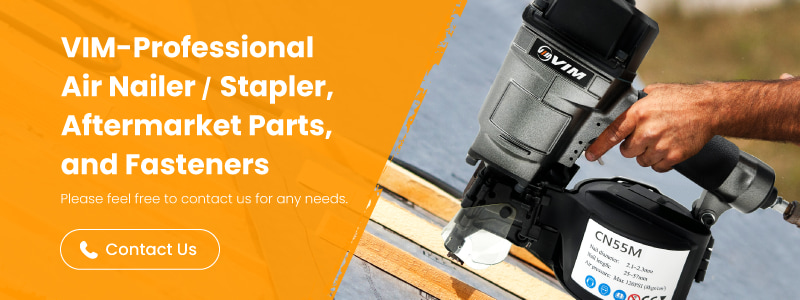What Are Plastic Cap Fastening Tools? 7 Tips to Choose Your Perfect One
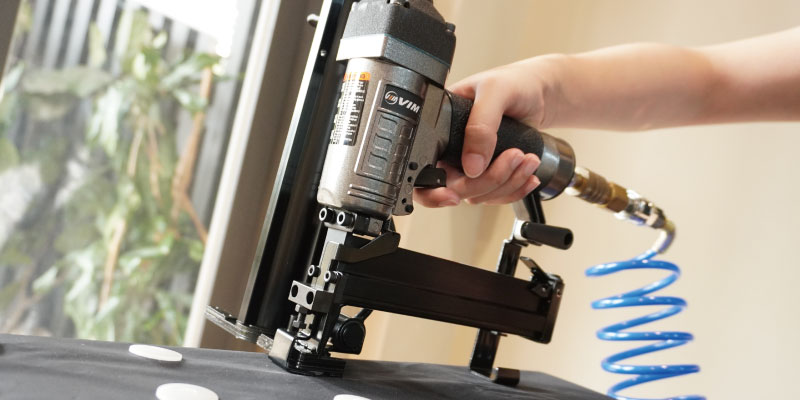
Plastic cap nailers/staplers are essential in various construction and renovation projects, offering superior holding power, enhanced material protection, and increased safety compared to traditional nailers and staplers. These specialized tools are designed to securely attach materials such as roofing felt, house wrap, and insulation, preventing tearing and ensuring a reliable bond.
In this guide, we’ll explore the definition and purpose of plastic cap stapler/nailer, the different types of fasteners and plastic caps used, and the power sources that drive these tools. We'll also discuss their versatile applications in construction, the benefits they offer, and how they compare to traditional fastening tools. Finally, we’ll provide tips on selecting the right plastic cap nailer/stapler for your specific needs, ensuring you make an informed decision for your next project.
【Extended reading:10 Revolutionary Tips for Choosing Coil Nail Guns in Construction】
What are Plastic Cap Fastening Tools?
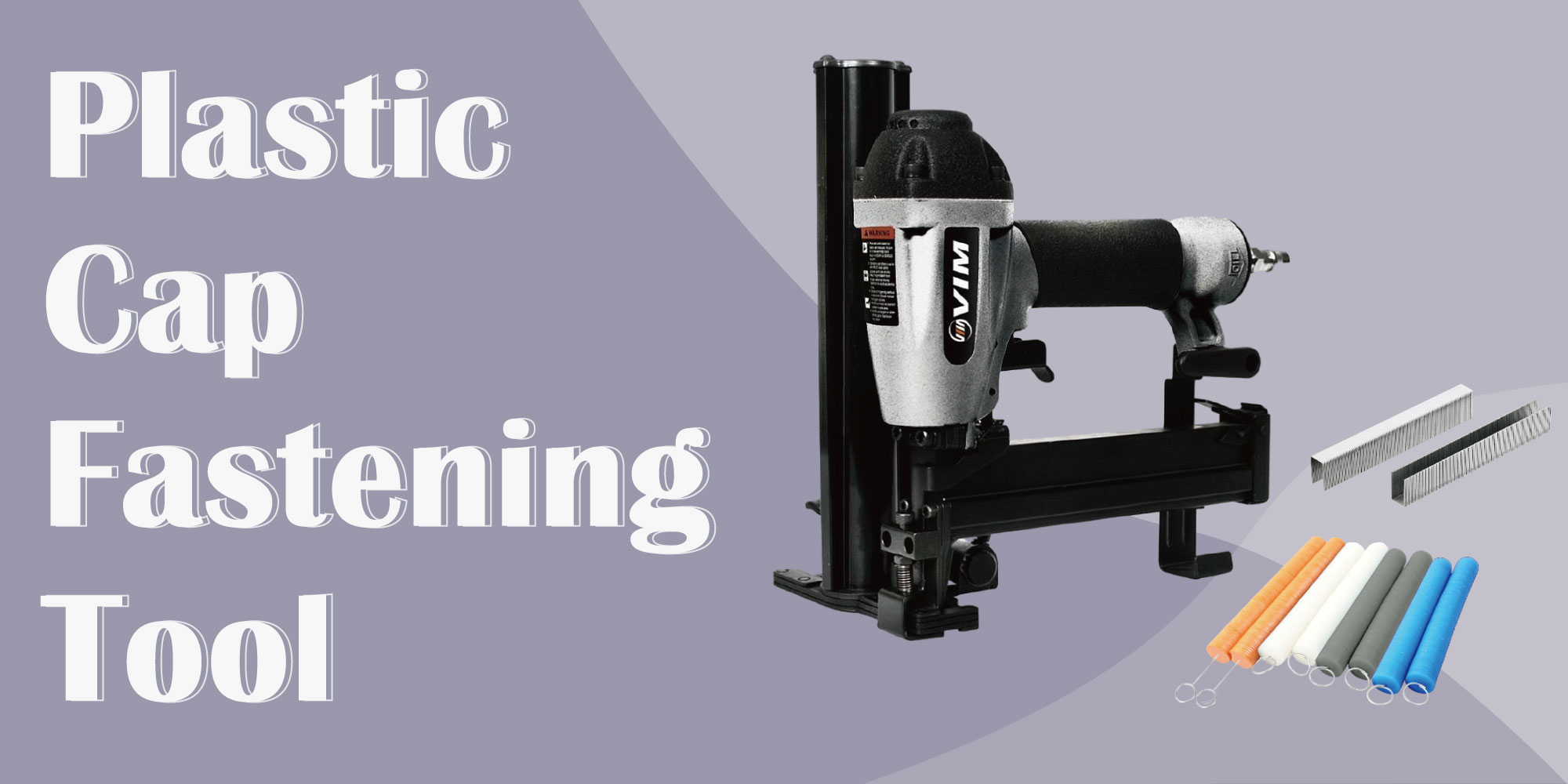 Definition and Purpose
Definition and Purpose
Plastic cap stapler/nailer are specialized tools designed for securing materials with plastic caps, providing enhanced holding power and increased safety. These tools are commonly used in construction and other industries to attach materials like roofing felt, house wrap, and insulation. The primary purpose of plastic cap nailers/staplers is to prevent tearing and to ensure a more secure attachment compared to traditional nailers or staplers.
Plastic Cap Nailers vs. Staplers: Different Types of Fasteners Used
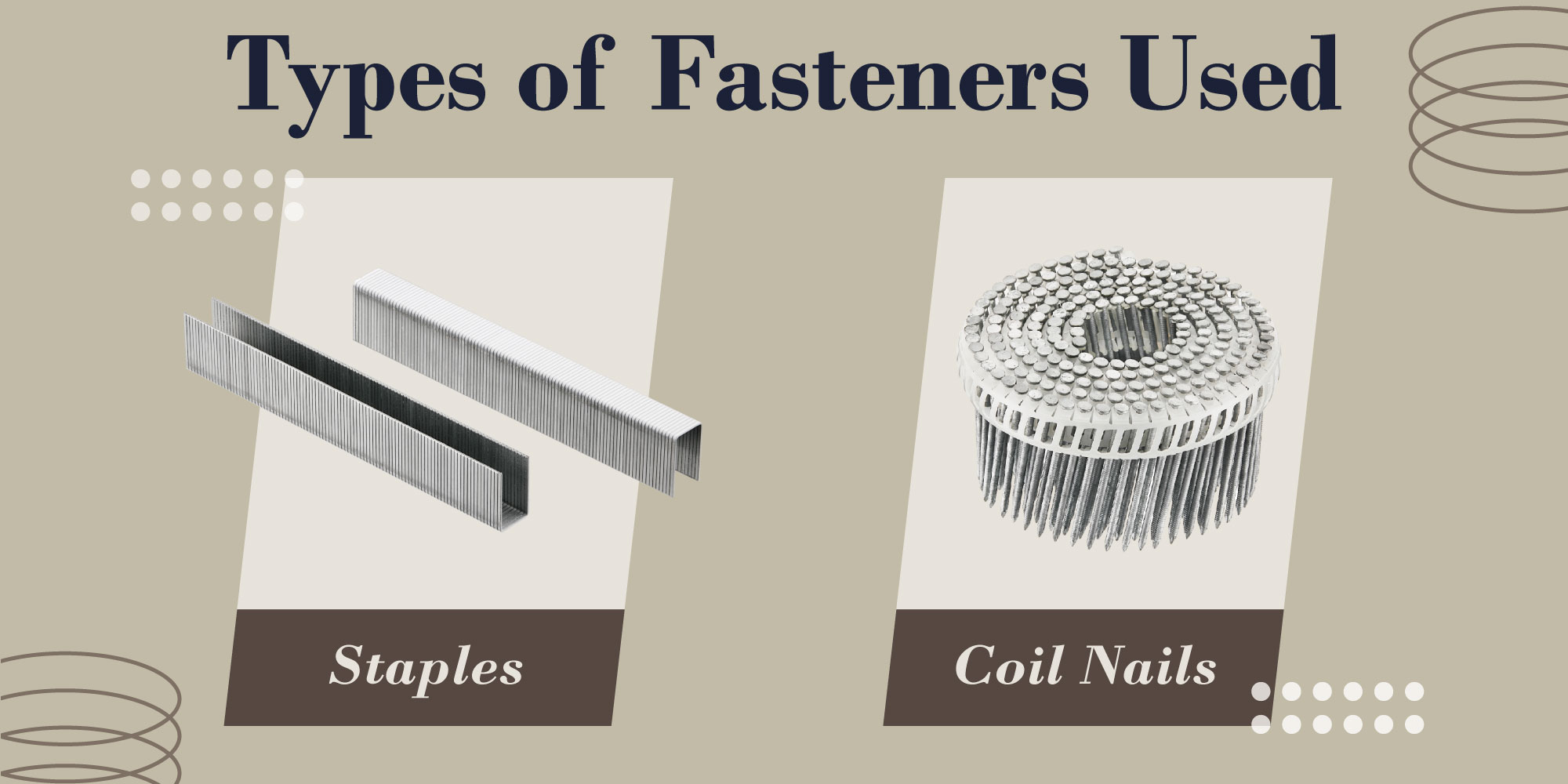
1. Plastic Cap Nailers: Coil Nails
Coil nails are commonly used in plastic cap nailers, providing a continuous supply of nails that are ideal for high-speed applications. These nails are coiled together, allowing for efficient reloading and consistent performance. Coil nails are particularly useful in roofing and siding applications where speed and efficiency are critical.
【Featured products:Wire Coil Nails, Plastic Collated Coil Nails】
【Extended reading:Choosing the Right Coil Nails: 8 Essential Factors for Your Project 】
【Extended reading:A Deep Dive into Coil Nails: 5 Reasons You Should Choose Coil Nails】
2. Plastic Cap Staplers: Staples
Staples are another type of fastener used in plastic cap staplers. They provide a secure hold for materials like house wraps, insulation, and tarps. Staples are ideal for applications requiring wide coverage and are known for their ability to distribute pressure evenly, reducing the risk of material tearing.
Types of Plastic Cap
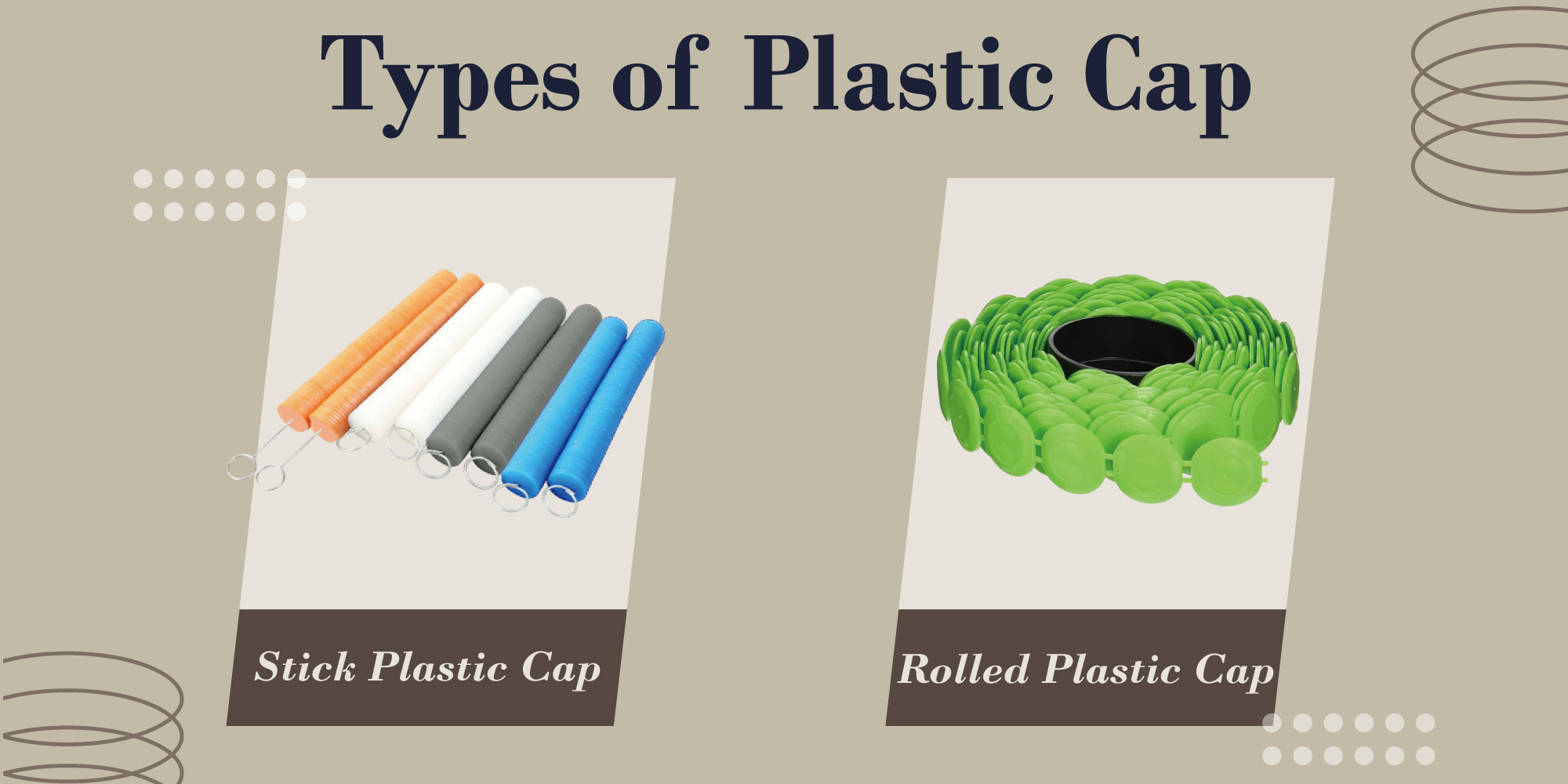 1. Stick Plastic Cap
1. Stick Plastic Cap
Stick plastic caps are designed to be used with both plastic cap nailers and staplers. These caps come in strips and are fed into the tool for each fastening action.
2. Rolled Plastic Cap
Rolled plastic caps are used with coil nailers or staplers and come in rolls that provide a continuous supply of caps.
【Featured Products:VIM Type Plastic Cap 】
Power Sources of Plastic Cap Nailers and Staplers
1. Manual
Manual plastic cap staplers/nailers are hand-operated and do not require an external power source. Ideal for small-scale projects and for use in areas where access to air compressor is limited. They are lighter in weight and cheaper in price but may require more effort and time compared to powered options.
2. Pneumatic
Pneumatic plastic cap nailers/staplers are powered by compressed air, offering increased power and speed for fastening applications. Ideal for large-scale projects and professional use as they providing consistent and reliable performance. They are particularly useful in high-volume applications where efficiency and speed are crucial.
Applications of Plastic Cap Nailers and Staplers
.jpg) Plastic cap staplers/nialers are versatile and essential in various construction projects. Here are some of the key applications:
Plastic cap staplers/nialers are versatile and essential in various construction projects. Here are some of the key applications:
【Extended reading:Air Nailer Troubles? 6 Trigger Issues and How to Fix Them】
1. Roofing
Ideal for securing roofing materials like felt and underlayment, providing durability and protection against the elements.
2. House Wrap and Insulation
Ensures a reliable attachment of house wrap and insulation, maintaining the building's thermal envelope for energy efficiency.
3. Building Wraps and Felts
Secures building wraps and felts, enhancing weather resistance and preventing water infiltration and air leaks.
4. Tar Paper
Perfect for attaching tar paper (roofing felt), keeping it flat and secure to prevent water and wind damage.
5. Vapor Barriers
Firmly secures vapor barriers to prevent moisture penetration, avoiding mold growth and structural damage.
6. Event Setup and Tent Construction
Used in setting up tents and temporary structures, securing tarps and coverings to ensure stability and weather protection.
Benefits of Plastic Cap Nailers and Staplers
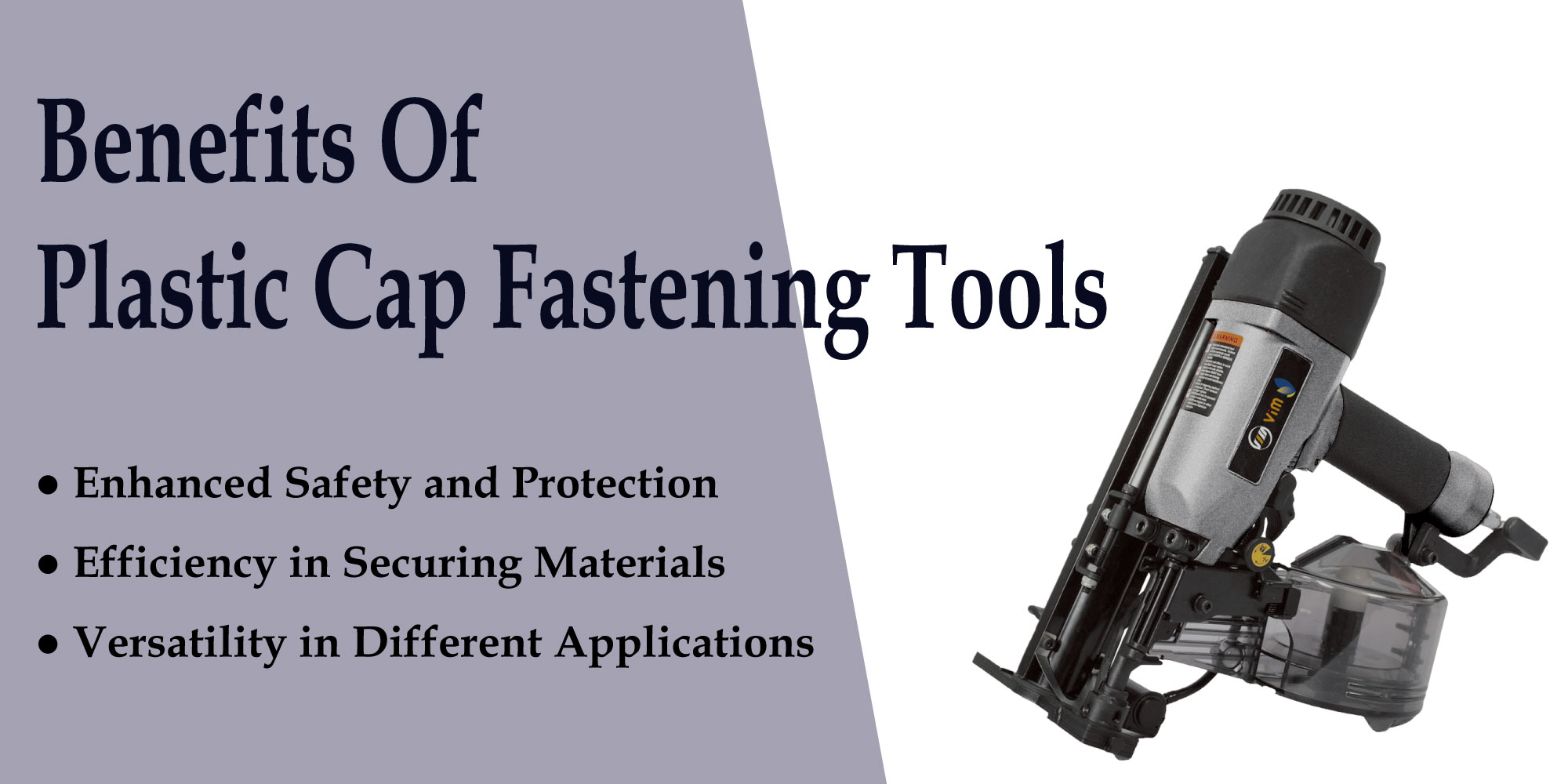 Plastic cap stapler/nailers are a game-changer in construction and renovation, offering superior performance, enhanced safety, and versatility. These tools improve efficiency across various applications, making them a smart choice for both professionals and DIY enthusiasts. Understanding their benefits can help you make better decisions for your projects.
Plastic cap stapler/nailers are a game-changer in construction and renovation, offering superior performance, enhanced safety, and versatility. These tools improve efficiency across various applications, making them a smart choice for both professionals and DIY enthusiasts. Understanding their benefits can help you make better decisions for your projects.
1. Enhanced Safety and Protection
Plastic cap nailers and plastic cap staplers provide enhanced safety and protection by distributing the holding force over a larger area. This reduces the risk of material damage and ensures a secure attachment, preventing accidents caused by loose or improperly secured materials. The wide caps also offer better wind and weather resistance, protecting the integrity of the structure.
2. Efficiency in Securing Materials
Plastic cap nailers/staplers are designed for efficiency, allowing for quick and easy installation of materials. Plastic cap fasteners penetrate and secure materials with minimal effort, saving time and labor costs. Their design ensures a firm hold, reducing the need for rework and enhancing overall productivity on the job site.
3. Versatility in Different Applications
Plastic cap nailers/staplers are highly versatile and can be used in a wide range of applications. From roofing and house wrap to insulation, vapor barriers, and even temporary event setups, these tools are suitable for both residential and commercial projects. Their adaptability makes them a valuable addition to any contractor's toolkit.
Comparison with Traditional Nailers and Staplers
Plastic cap staplers/nailers and traditional nailers and staplers both serve important roles in construction, offering distinct advantages depending on the application. While plastic cap nailers/staplers are designed to provide benefits in specific scenarios, traditional nailers and staplers remain reliable for many common tasks.
1. Even Pressure Distribution and Material Protection
Plastic cap tools spread pressure evenly, reducing the risk of damaging delicate materials like house wraps and insulation by distributing force over a larger area. Traditional nailers and staplers, with smaller contact points, may cause punctures but are better for tougher materials where concentrated fastening is needed.
2. Improved Hold and Versatility
The wide cap design of plastic cap tools provides a strong hold, especially in windy or adverse conditions, making them ideal for specialized applications. Traditional nailers and staplers are highly versatile, effective for a broad range of standard fastening tasks.
3. Visibility and Space
Plastic cap fasteners are more visible and occupy more space, which might not be ideal for applications where appearance is important. Traditional nailers and staplers offer a more discreet finish, making them more suitable for tasks where aesthetics matter.
4. Environmental Considerations
The use of plastic caps in plastic cap tools can raise environmental concerns, as they contribute to plastic waste. Traditional nailers and staplers typically use metal nails or staples, which are more easily recyclable, reducing environmental impact.
5. Ease of Use
Plastic cap tools are more complex to operate, with additional steps needed to load and secure the caps, increasing the risk of jamming and requiring a longer learning curve. Traditional nailers and staplers are simpler and more straightforward, with fewer instances of jamming, making them easier to use.
6. Cost and Maintenance
Plastic cap tools are generally more expensive and require more maintenance due to their intricate design. Traditional nailers and staplers are more cost-efficient and easier to maintain, making them a better choice for high-volume or budget-conscious projects.
Comparison Chart
| Criteria | Plastic Cap Fastening Tools | Traditional Nailers and Staplers |
|---|---|---|
| Even Pressure Distribution | Wide cap distributes pressure evenly, reducing risk of tearing delicate materials. | Smaller contact area, higher likelihood of puncturing or tearing, but useful for concentrated fastening. |
| Improved Hold | Provides secure attachment, especially under wind and weather conditions. | Effective for a range of standard tasks but may not offer the same level of hold. |
| Material Protection | Minimizes material damage by spreading holding force over a larger area. | Higher risk of material puncture, but effective for securing robust materials. |
| Visibility and Space | Fasteners are more visible and occupy more space due to the cap's larger surface area. | Less noticeable finish, suitable for applications where appearance is important. |
| Ease of Use | Slightly more complex, risk of jamming due to plastic caps. | Simpler design, fewer instances of jamming, shorter learning curve. |
| Tool Maintenance | May require more maintenance due to intricate design. | Generally require less maintenance and are easier to repair. |
| Cost Efficiency | Higher cost due to added materials and specialized design. | More economical, especially in high-volume applications. |
| Versatility | More specialized, useful in specific scenarios requiring protection and enhanced holding power. | Highly versatile, can be used in a wide range of projects. |
| Environmental Considerations | Potential environmental concerns due to plastic caps. | Metal nails or staples are more easily recyclable. |
【Featured products:Plastic Cap Nailers/Staplers】
Choosing the Right Plastic Cap Nailers and Staplers
 1. Assess Your Needs in Fasteners
1. Assess Your Needs in Fasteners
Start by evaluating the specific requirements of your project. Determine the level of holding power, material protection, and ease of use needed. Consider aspects such as cap size, fastener size, magazine capacity.
【Extended reading:Stop Downtime: 4 Air Stapler Magazine Issues You Can Solve Today】
【Extended reading:3 Common Magazine Issues in Air Nailers and How to Fix Them】
2. Evaluate Power Source
Decide whether you prefer a pneumatic model, which is typically more powerful and suitable for heavy-duty tasks, or a manual one, which is usually for smaller jobs or locations without easy access to compressed air.
3. Seek Adjustable Settings
Tools with adjustable depth settings allow you to control how deep the cap and fastener are driven into the material. This feature can enhance versatility and ensure a more precise finish across different materials and applications.
4. Review Ergonomics and Noise Levels
Choose a well-balanced, ergonomic tool with light weight and comfortable grips to reduce fatigue and improve precision during extended use. In noise-sensitive environments, opt for quieter models to minimize job site noise pollution and comply with noise restrictions.
5. Ensure Compatibility
Ensure that the tool is compatible with the fasteners you plan to use. Some models might only work with specific brands or types of caps, so verify this before purchasing to avoid inconvenience.
6. Consider Long-term Costs
Evaluate not just the initial purchase price, but also the long-term costs, including maintenance, replacement parts, and the availability of consumables like plastic caps.
7. Appraise Durability and Warranty Support
Construction sites can be demanding environments, so selecting a tool made from high-quality materials is important. Look for models with sturdy construction, resistant to wear and tear, and suitable for tough working conditions.
Conclusion
Plastic cap nailers/staplers are indispensable for a variety of construction and renovation tasks, providing enhanced safety, material protection, and efficiency. When it comes to choosing the right tool for your project, understanding the specific requirements and evaluating the features of available options is key to achieving optimal results. Vim’s Plastic Cap Nailer and Plastic Cap Stapler stand out in the market with their ergonomic design, adjustable depth control, and durable construction, ensuring that your fastening tasks are performed with precision and ease.
Whether you are working on roofing, house wrap installation, or securing temporary protection materials, Vim’s tools are designed to meet the demands of both residential and commercial projects. The high-capacity magazines and lightweight build of our tools allow for extended use without compromising on performance, making them a reliable choice for professionals and DIY enthusiasts alike. By selecting the right plastic cap stapler/nailer, such as those offered by Vim, you can ensure that your projects are completed efficiently, safely, and to the highest standard.
Invest in quality and durability with Vim’s range of plastic cap nailers/staplers and experience the difference that professional-grade equipment can make in your work.If you would like to know more details, please feel free to contact us.
【Extended reading:All you need to know to choose your perfect air nailers, air staple guns, and air pliers】
Article Classification
Recent Articles
- Handheld vs. Foot-Operated Carton Staplers: Which Is Better for Your Workflow?
- The All-in-One Reference for 4 Firing Modes in Pneumatic Tools
- The Ultimate Guide to Pin Nailers: How to Pick the Best One for Any Job
- What Is Decorative Nailer? Know Every Unique Difference About It
- 4 Reasons You Need Mattress Stapler for Professional Mattress Production

